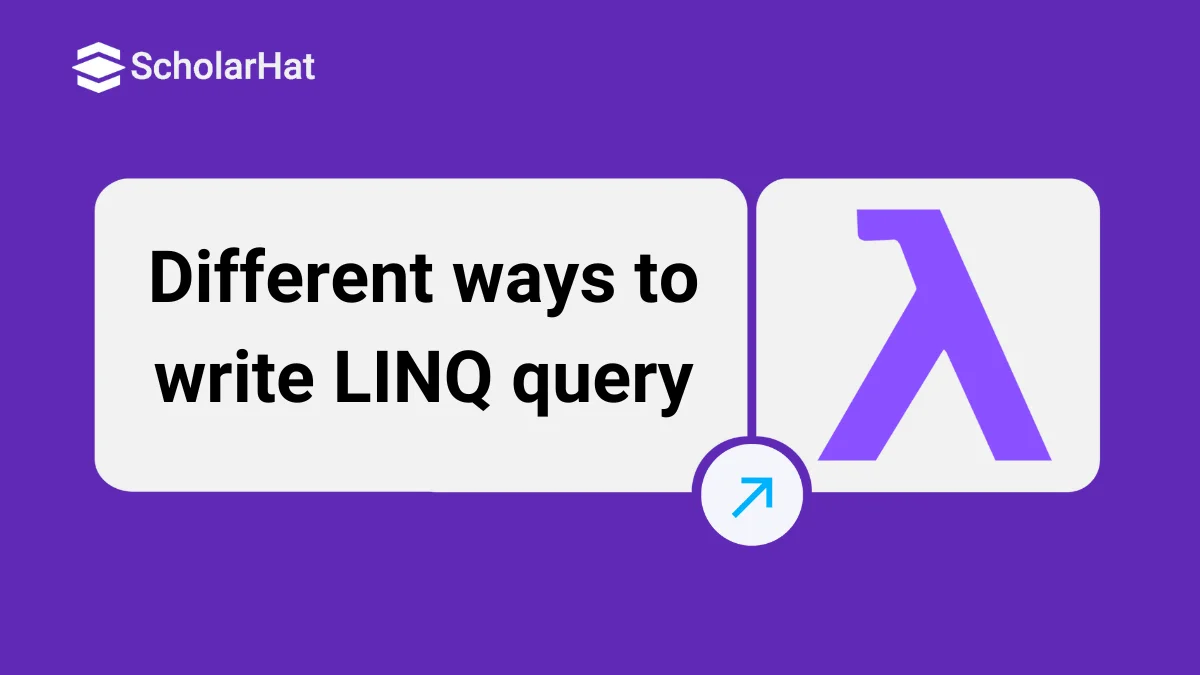26
DecDifferent ways to write LINQ query
LINQ provides a uniform programming model (i.e. common query syntax) to query data sources (like SQL databases, XML documents, ADO.NET Datasets, Various Web services and any other objects such as Collections, Generics, etc.). LINQ provides you three different ways to write a LINQ query in C# or VB.
Query Expression (Query Syntax)
Query expression syntax is like as SQL query syntax with just a few minor deviations. The result of a query expression is a query object, which is usually a collection of type IEnumerable<T> or IQueryable<T>. This syntax is easy to read and write and at compile time, query expression is converted into Method Invocation.
Query Expression Syntax
from [identifier] in [source collection] let [expression] where [boolean expression] order by [expression(ascending/descending)] select [expression] group [expression] by [expression] into [expression]
Query Expression Example
// Datasource
List<int> numbers = new List<int>() { 1, 2, 3, 4, 5, 6, 7, 8, 9, 10 };
// Query based syntax
IEnumerable query =
from num in numbers
where num > 5 && num < 10
select num;
//result: 6,7,8,9
Method Invocation (Method Syntax)
Method syntax is complex as compared to Query expression since it uses lambda expression to write LINQ query. It is easily understood by .NET CLR. Hence at compile time, Query expression is converted into Method Invocation. The result of a Method syntax is also a query object, which is usually a collection of type IEnumerable<T> or IQueryable<T>.
[source collection] .Where [boolean expression] .OrderBy [expression(ascending/descending)] .Select [expression] .GroupBy [expression]
Method Syntax Example
// Datasource
List<int> numbers = new List<int>() { 1, 2, 3, 4, 5, 6, 7, 8, 9, 10 };
// Method based syntax
IEnumerable<int> query =numbers.Where(num => num > 5 && num < 10)
//result: 6,7,8,9
Note
There are no semantic differences (in terms of performance, execution) between Query Syntax and Method Syntax.
Mixed Syntax
You can use a mixture of both syntaxes by enclosing a query expression inside parentheses and make a call to a method.
Mixed Syntax Example
// Datasource
List<int> numbers = new List<int>() { 1, 2, 3, 4, 5, 6, 7, 8, 9, 10 };
// Mixed syntax
int query = (from num in numbers
where num > 5 && num < 10
select num).Count();
//result: 4
What do you think?
I hope you will enjoy LINQ query syntax while programming with LINQ. I would like to have feedback from my blog readers. Your valuable feedback, question, or comments about this article are always welcome.






